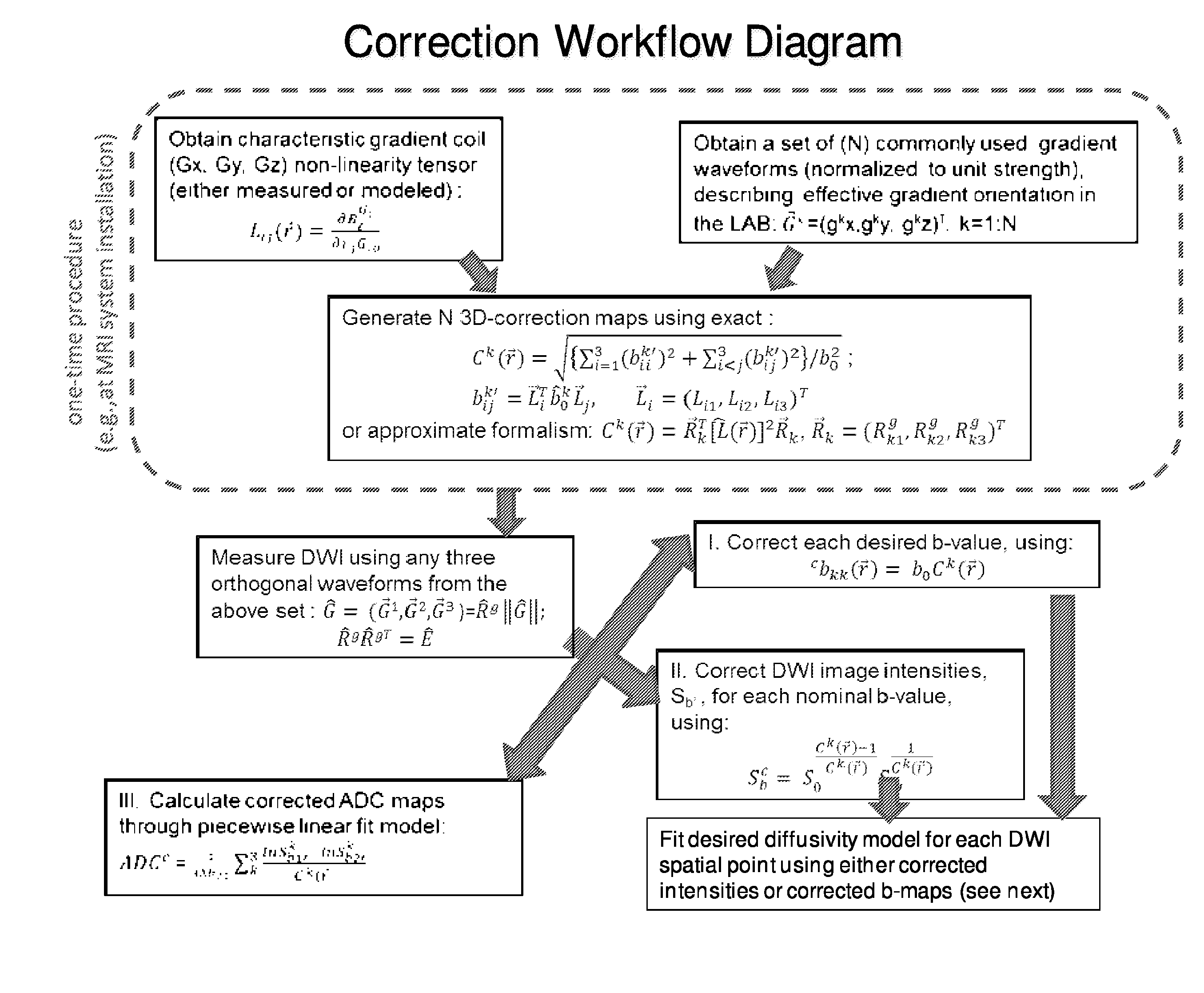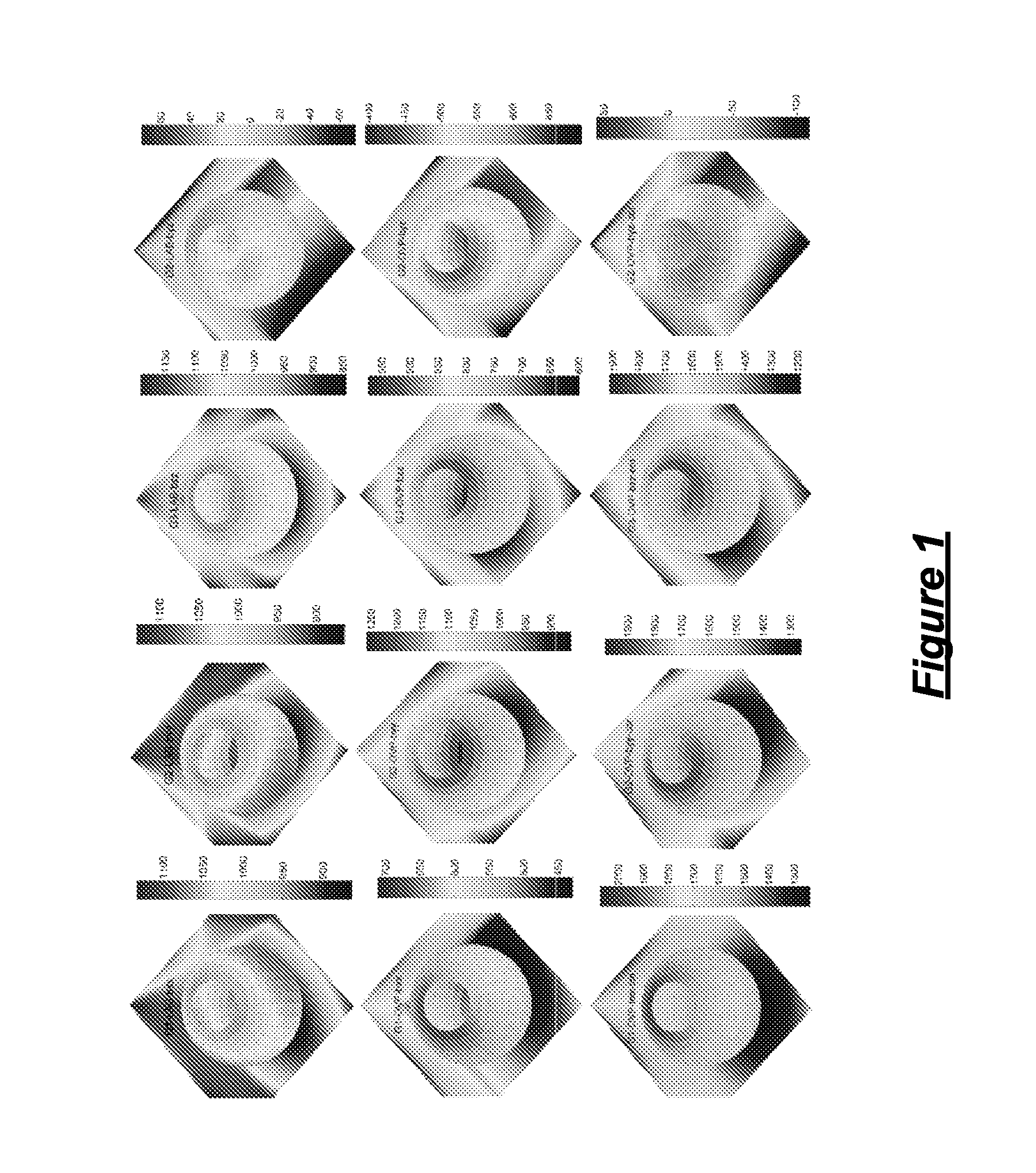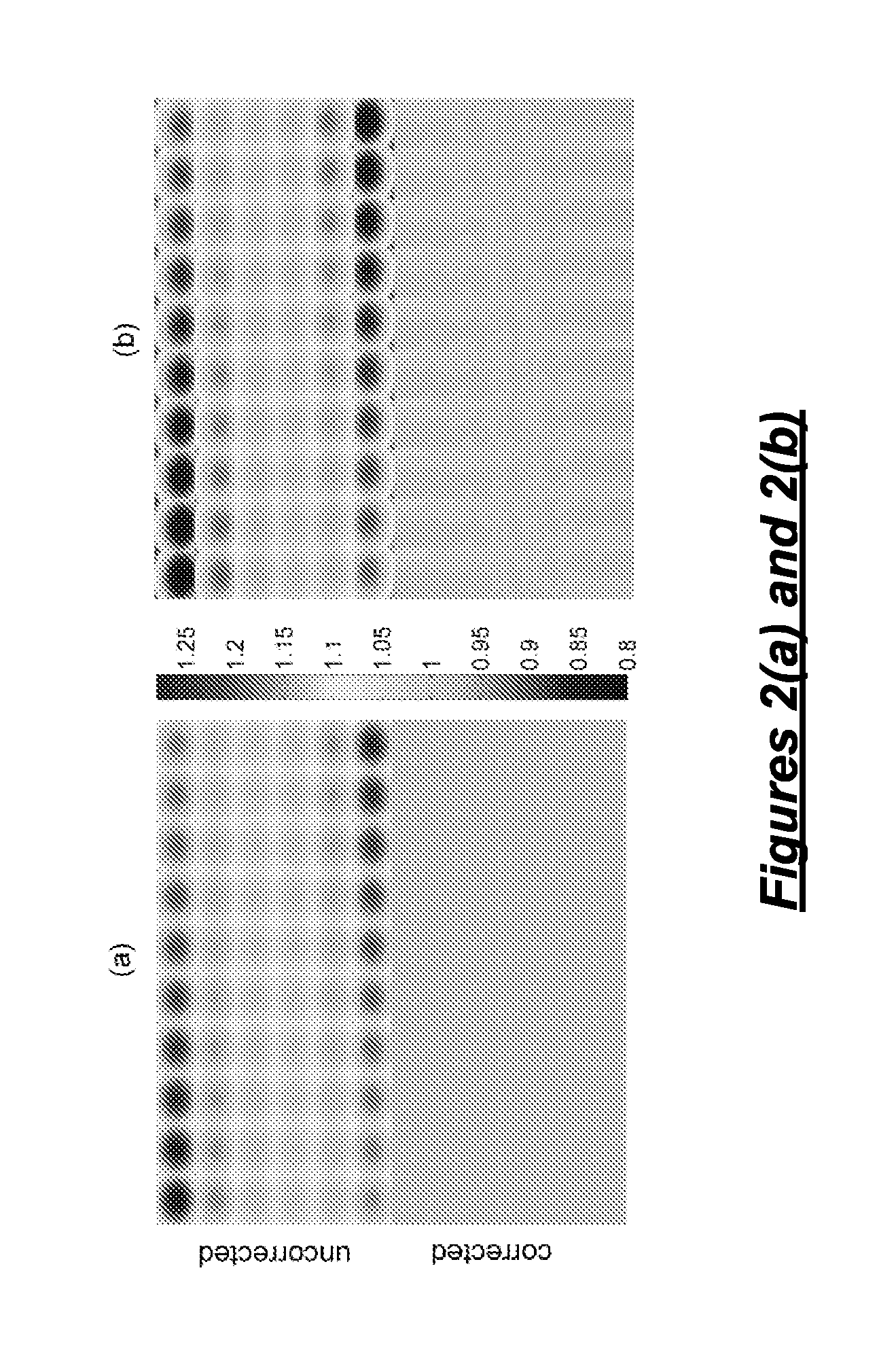Error Analysis and Correction of MRI ADC Measurements for Gradient Nonlinearity
a gradient nonlinearity and error analysis technology, applied in the field of error analysis and correction of mri adc measurements for gradient nonlinearity, can solve the problem of 20% error in spatially dependent mean diffusivity measurements, and achieve the effect of removing bias errors
- Summary
- Abstract
- Description
- Claims
- Application Information
AI Technical Summary
Benefits of technology
Problems solved by technology
Method used
Image
Examples
example implementations
(1) Phantom
[0044]An ice-water based isotropic DWI phantom was devised with known ADC=1.1×10−3 mm2 / s (20). One long 30 mm diameter tube filled with distilled water provided the universal ADC standard (FIG. 1). The phantom was constructed from a 50-mL polypropylene conical tube (30×115 mm) and 3000-mL polypropylene wide-mouth jar. The 200-mL tube was filled with distilled water, capped, and cemented to the underside of the 3000 mL jar top. Prior to diffusion measurements, cubed or crushed ice and water were added such that ice filled the full extent of the jar. By screwing on the jar top, the 200-mL tube of water was held in the center icewater mixture. The phantom was wrapped in a hospital “blue pad” for insulation and to absorb surface condensate. Following preparation of the phantom, ˜60 minutes was allowed to reach thermal equilibrium. The ice-water thermostat provided temperature control to 0° C. for several hours and allowed ADC measurement accuracy within 2% STD.
(2) MRI Data Ac...
PUM
 Login to View More
Login to View More Abstract
Description
Claims
Application Information
 Login to View More
Login to View More - R&D
- Intellectual Property
- Life Sciences
- Materials
- Tech Scout
- Unparalleled Data Quality
- Higher Quality Content
- 60% Fewer Hallucinations
Browse by: Latest US Patents, China's latest patents, Technical Efficacy Thesaurus, Application Domain, Technology Topic, Popular Technical Reports.
© 2025 PatSnap. All rights reserved.Legal|Privacy policy|Modern Slavery Act Transparency Statement|Sitemap|About US| Contact US: help@patsnap.com



